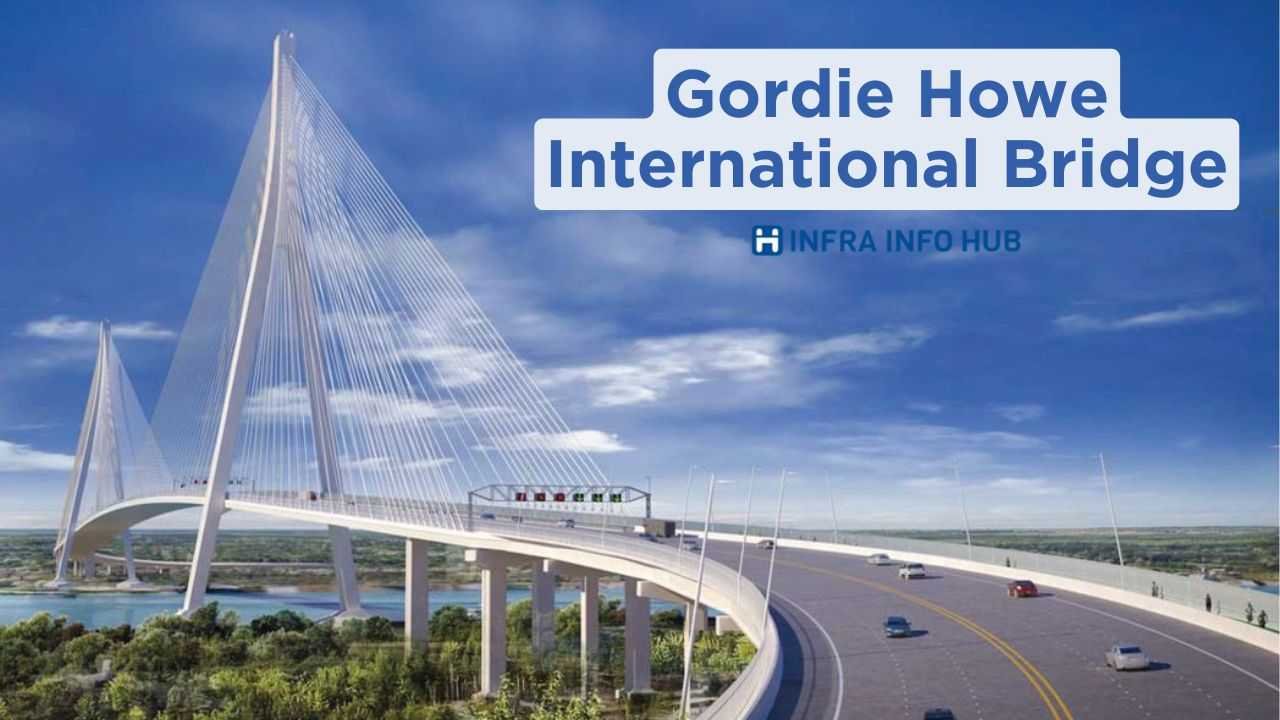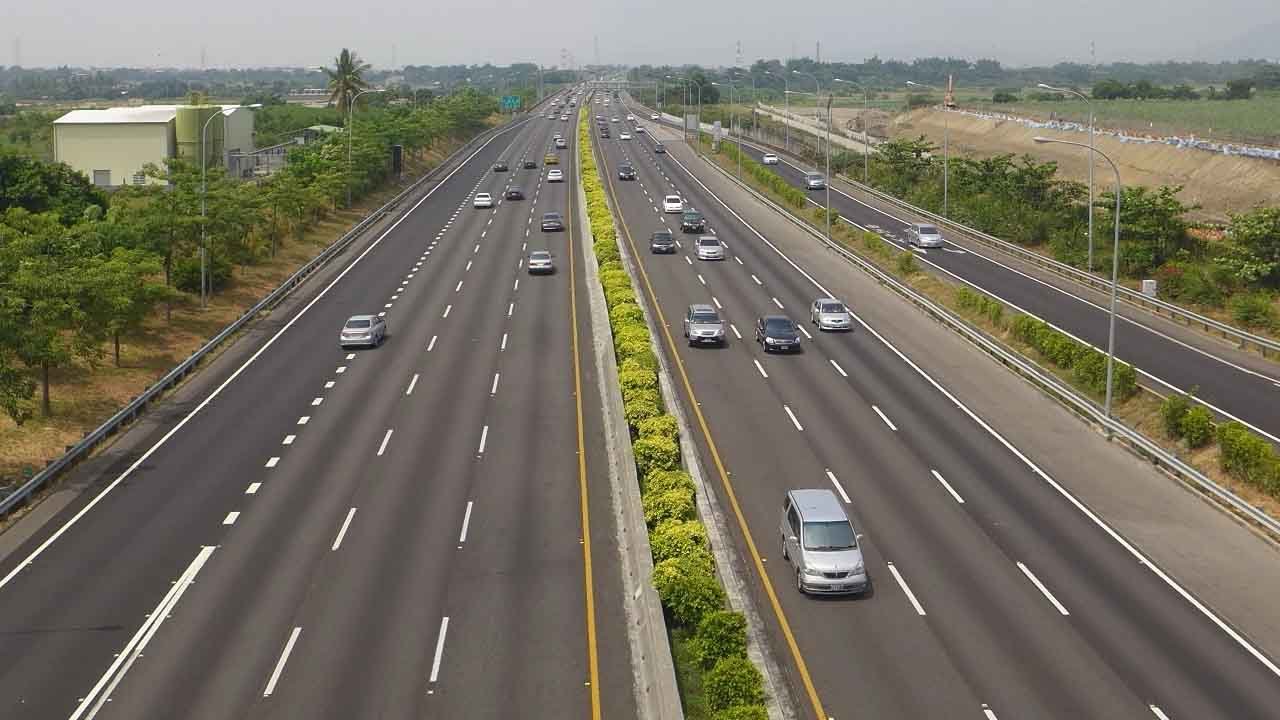Table of Contents
- 1 Introduction: A Bridge Built for the Future
- 2 Key Technical Specifications
- 3 Strategic Significance in North American Trade
- 4 Timeline of Development
- 5 Financing and Governance
- 6 Community and Environmental Impact
- 7 Engineering Innovations
- 8 Comparison with Other Iconic Bridges
- 9 Future Prospects and Long-Term Benefits
- 10 Conclusion
- 11 FAQs: Gordie Howe International Bridge
- 11.1 1. When will the Gordie Howe International Bridge open?
- 11.2 2. Why is the bridge named after Gordie Howe?
- 11.3 3. How will this bridge affect trade between the U.S. and Canada?
- 11.4 4. Who is funding the Gordie Howe International Bridge?
- 11.5 5. How does it compare to the Ambassador Bridge?
- 11.6 6. Will the bridge have pedestrian access?
- 11.7 7. What industries will benefit the most?
- 11.8 8. What is the total cost of the bridge?
Introduction: A Bridge Built for the Future
The Gordie Howe International Bridge is more than just an infrastructure project—it is a vision of the future for Canada–U.S. connectivity, global trade, and regional development. Linking Windsor, Ontario, with Detroit, Michigan, the bridge will become one of the most important cross-border trade routes in North America. Named after Gordie Howe, the legendary Canadian-born hockey star who played most of his career in Detroit, the bridge not only honors a cultural icon but also symbolizes enduring ties between the two nations.
When complete, the bridge will stand as the longest cable-stayed span in North America, featuring advanced engineering, environmentally conscious construction, and an anticipated lifespan exceeding 125 years. It will revolutionize the Detroit–Windsor corridor, which already facilitates 25% of all U.S.–Canada trade, making it a centerpiece of the global supply chain.
Key Technical Specifications
Bridge Structure
- Type: Cable-stayed bridge
- Main Span: 853 meters (2,799 feet), the longest in North America
- Total Length: Approximately 2.5 kilometers (1.5 miles)
- Towers: 220 meters (722 feet), taller than Detroit’s Renaissance Center
- Deck Width: 40 meters (131 feet)
- Lanes: Six traffic lanes (three in each direction)
- Non-Motorized Path: Dedicated pedestrian and cycling lane
Lifespan and Safety
-
Designed for a 125-year lifespan
-
Built to withstand extreme weather, seismic activity, and heavy traffic
-
Includes cutting-edge safety barriers, lighting, and monitoring systems
Customs and Border Facilities
Both sides of the bridge will feature state-of-the-art ports of entry, providing:
-
Streamlined customs and immigration processing
-
Enhanced security measures with modern inspection technology
-
Large truck inspection plazas to ease congestion
Strategic Significance in North American Trade
Reducing Congestion at the Ambassador Bridge
The Detroit–Windsor corridor is currently dominated by the Ambassador Bridge, a suspension bridge opened in 1929. While historically vital, it has long been plagued by congestion and limited capacity. The Gordie Howe International Bridge will serve as a modern alternative, reducing bottlenecks and enabling smoother flow of goods.
Supporting Key Industries
-
Automotive: With Michigan and Ontario being automotive hubs, the bridge will enhance just-in-time delivery crucial for vehicle assembly.
-
Agriculture: Fast-tracked food shipments across the border will reduce spoilage and improve supply chain reliability.
-
Manufacturing and Logistics: Increased throughput capacity will support factories, warehouses, and freight companies on both sides.
Economic Impact
The corridor already represents $140 billion in annual trade, and the new crossing will ensure long-term growth. Studies estimate:
-
Billions of dollars in trade efficiency savings
-
Creation of thousands of jobs during construction
-
Ongoing employment in logistics, security, and maintenance
Timeline of Development
Early Planning and Agreements
-
2000–2010: Feasibility studies explored solutions to relieve Ambassador Bridge congestion.
-
2012: The Canada–Michigan Crossing Agreement was signed, ensuring cooperation between both governments.
-
2015: Bridge officially named the Gordie Howe International Bridge, honoring the hockey legend’s cross-border legacy.
Construction Milestones
-
2018: Official groundbreaking and start of foundation works.
-
2019–2022: Tower construction begins, each rising over 200 meters.
-
2023–2024: Deck installation and cable-stay systems integrated.
-
2025: Expected completion and official opening to traffic.
Financing and Governance
The project is managed by the Windsor–Detroit Bridge Authority (WDBA), a Canadian Crown corporation. The construction is led by Bridging North America (BNA), a consortium including:
-
Dragados Canada
-
Fluor Corporation
-
Aecon Group
Cost and Funding
-
Estimated cost: CAD $5.7 billion (USD $4.2 billion)
-
Funding model: Fully financed by Canada, with cost recovery through toll revenue
-
Ownership: Bridge will remain publicly owned, unlike the privately owned Ambassador Bridge
Community and Environmental Impact
Eco-Friendly Design
The project emphasizes sustainability, minimizing environmental disruption during construction and operation.
-
Use of recycled steel and concrete
-
Energy-efficient lighting and monitoring systems
-
Noise and air quality mitigation for nearby neighborhoods
Social Benefits
-
Community infrastructure programs in Windsor and Detroit
-
New parks, green spaces, and recreational areas near the project footprint
-
Employment opportunities for local residents, including underrepresented groups
Engineering Innovations
Longest Cable-Stayed Span in North America
At 853 meters, the Gordie Howe International Bridge surpasses all other cable-stayed bridges in the continent. The design required innovative anchoring systems and aerodynamic deck shaping to resist strong winds over the Detroit River.
Tower Construction
Each of the two 220-meter towers is anchored deep into bedrock, using advanced piling techniques to withstand riverbed conditions.
Cables and Decking
The stay cables are built from high-strength steel strands, capable of holding thousands of tons of weight. The deck installation uses a balanced cantilever method, ensuring structural stability throughout construction.
Comparison with Other Iconic Bridges
| Bridge | Type | Main Span | Opening Year | Key Feature |
|---|---|---|---|---|
| Gordie Howe International | Cable-stayed | 853m | 2025 | Longest cable-stayed span in North America |
| Ambassador Bridge | Suspension | 564m | 1929 | Handles 25% of Canada–U.S. trade |
| George Washington Bridge | Suspension | 1,067m | 1931 | World’s busiest motor vehicle bridge |
| Confederation Bridge (Canada) | Multi-span beam | 250m | 1997 | Longest bridge in Canada |
| Sunshine Skyway Bridge (FL) | Cable-stayed | 366m | 1987 | Iconic design across Tampa Bay |
Future Prospects and Long-Term Benefits
Cross-Border Efficiency
The bridge is expected to reduce customs wait times, which currently cost billions annually in lost productivity. With modernized border plazas, trucks and passenger vehicles will clear inspections faster, improving supply chain resilience.
Regional Transformation
Detroit and Windsor will gain significant leverage as logistics and transportation hubs, attracting investment in warehousing, manufacturing, and trade services.
Tourism and Cultural Exchange
The pedestrian and cycling path will make the Gordie Howe International Bridge not just a trade asset but also a destination for visitors, connecting communities and fostering cultural ties.
Conclusion
The Gordie Howe International Bridge is more than just North America’s newest trade corridor—it is a symbol of cooperation, innovation, and progress. With its record-breaking span, advanced engineering, and long-term economic benefits, the bridge will transform how goods and people move across the Canada–U.S. border.
As the largest infrastructure project in the history of the Detroit–Windsor region, it stands poised to serve generations, just as Gordie Howe himself stood as a symbol of perseverance, excellence, and unity.
FAQs: Gordie Howe International Bridge
1. When will the Gordie Howe International Bridge open?
The bridge is expected to open in late 2025, following final deck installation, cable adjustments, and testing.
2. Why is the bridge named after Gordie Howe?
It honors Gordie Howe, a Canadian-born hockey legend who played most of his career in Detroit, symbolizing unity between Canada and the U.S.
3. How will this bridge affect trade between the U.S. and Canada?
It will significantly reduce congestion, increase capacity for trucks and cars, and provide more efficient customs clearance, boosting North American trade flow.
4. Who is funding the Gordie Howe International Bridge?
The Government of Canada is fully financing the project, with costs recovered through toll revenues.
5. How does it compare to the Ambassador Bridge?
The Gordie Howe International Bridge will offer six modern traffic lanes, advanced border facilities, and a longer lifespan, compared to the nearly century-old Ambassador Bridge.
6. Will the bridge have pedestrian access?
Yes, the design includes a dedicated pedestrian and cycling path, making it accessible for both commuters and recreational use.
7. What industries will benefit the most?
The automotive, manufacturing, agriculture, and logistics sectors will gain the most due to improved supply chain efficiency.
8. What is the total cost of the bridge?
The project cost is estimated at CAD $5.7 billion (USD $4.2 billion).










